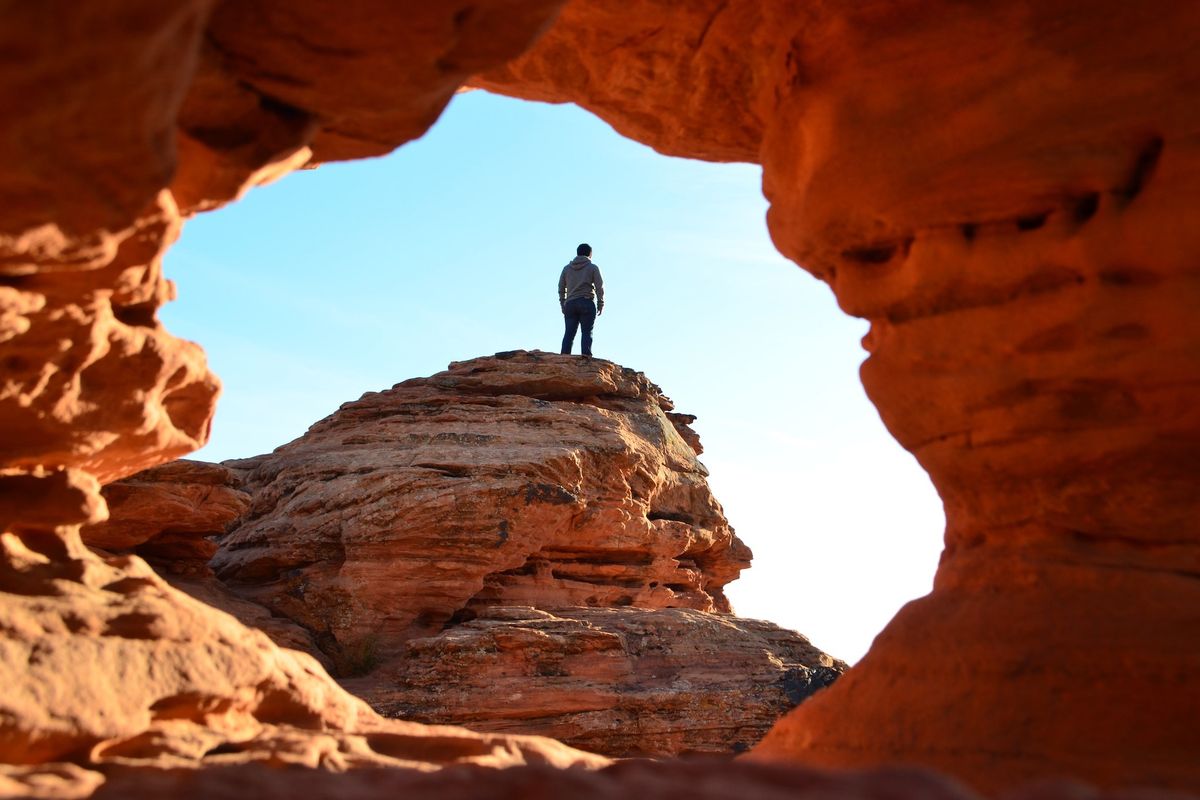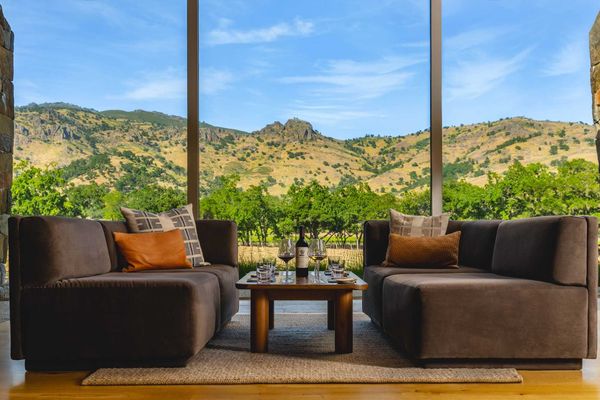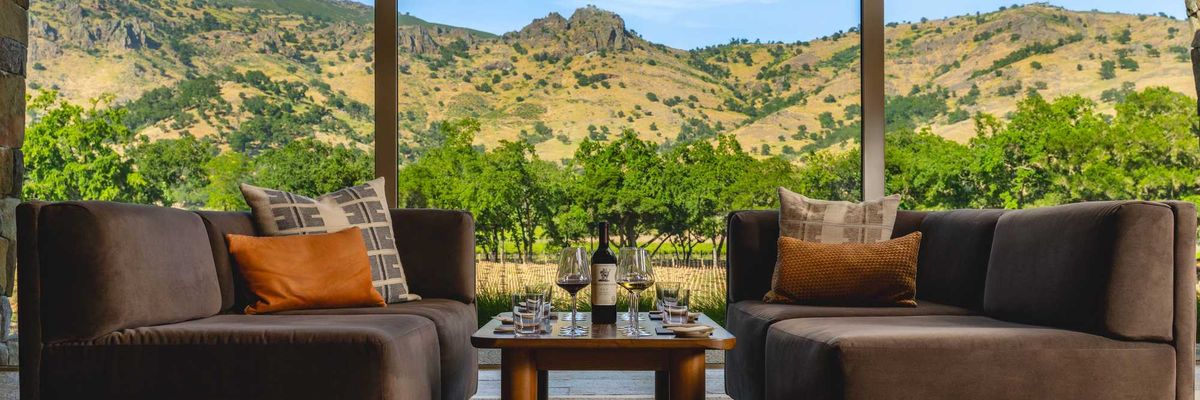Utah is high on the list for nature-loving getaways from the Bay Area. Home to "The Mighty Five"—The Grand Canyon plus Zion, Bryce Canyon, Capitol Reef, and Arches national parks—the state is an obvious bucket list destination.
But, such celebrated locales typically bring large crowds, which is less than ideal in the era of social distancing. Instead, explore some of Utah's less crowded but just-as-epic outdoor destinations.
Southern Utah provides countless choices of things to do, but for getting off the beaten path, Snow Canyon State Park and Cedars Break National Monument are perfect picks within driving distance from San Francisco. While the 11-hour trip from SF to Hurricane, Utah can be achieved in a day, there also some pretty cool stops along the way. Pull over for a highly photo-worthy visit to Seven Magic Mountains, the Insta-famous art instillation outside Las Vegas, or a rugged drive through the Mars-like Valley of Fire.
Snow Canyon State Park: Lava Tubes and Petrified Sand Dunes in an Otherworldly Terrain

With an otherworldly terrain of petrified dunes and lava tunnels, Snow Canyon State Park is destination-worthy without the crowds of Utah's more popular national monuments.
(Photo by Brandon Nelson on Unsplash)
Snow Canyon State Park is a 7,400-acre swath of sandstone cliffs and dunes in umber and sienna hues. Perhaps the most incredible thing about Snow Canyon is that it's not a national park, a fact that seems almost unbelievable when you explore its otherworldly terrain. And because of its proximity to Zion National Park, Snow Canyon—home to at least 13 protected species including the endangered desert tortoise—is often overlooked, which means smaller crowds. Here are a few of the highlights.
Petrified Dunes Trail and Lava Flow Overlook
Combine a few of the best hikes in the park with the 2.8 mile loop that combines the Petrified Dunes Trail, Butterfly Trail, and Lava Flow Overlook Trail. Beginning at the Butterfly Trail parking lot, take the trail counterclockwise to begin with the Lava Flow portion of the hike, which allows for panoramic views of much of the canyon as you wander through the lava fields. Be sure to check out the view from West Canyon Overlook before continuing on to one of the lava tubes—small caves that were formed when lava flowed from an erupting volcano. Carry on to the petrified sandstone dunes.
Jenny's Canyon
You may think that a slot canyon not overrun with crowds posing for photos is too good to be true, but Jenny's Canyon is real and utterly photogenic. At a quick .3 miles, the trail to Jenny's Canyon winds through a sandy desert to a deep and towering slot canyon. Take your time in there and, when you're finished, check out the Slot Canyon Overlook just to the right of the trail.
When to Go
Temperatures from June through September can reach into the 90s, while the winter months only get as cold as the low 50s. Naturally, spring and fall are the ideal times to visit, but if you plan your hikes early in the day before the heat really creeps in, summer can be pleasant as well. The park seldom gets snow (despite its name) so you really can visit Snow Canyon any time of year.
Cedar Breaks National Monument: A Natural Coliseum of Epic Colors and Ancient Pines
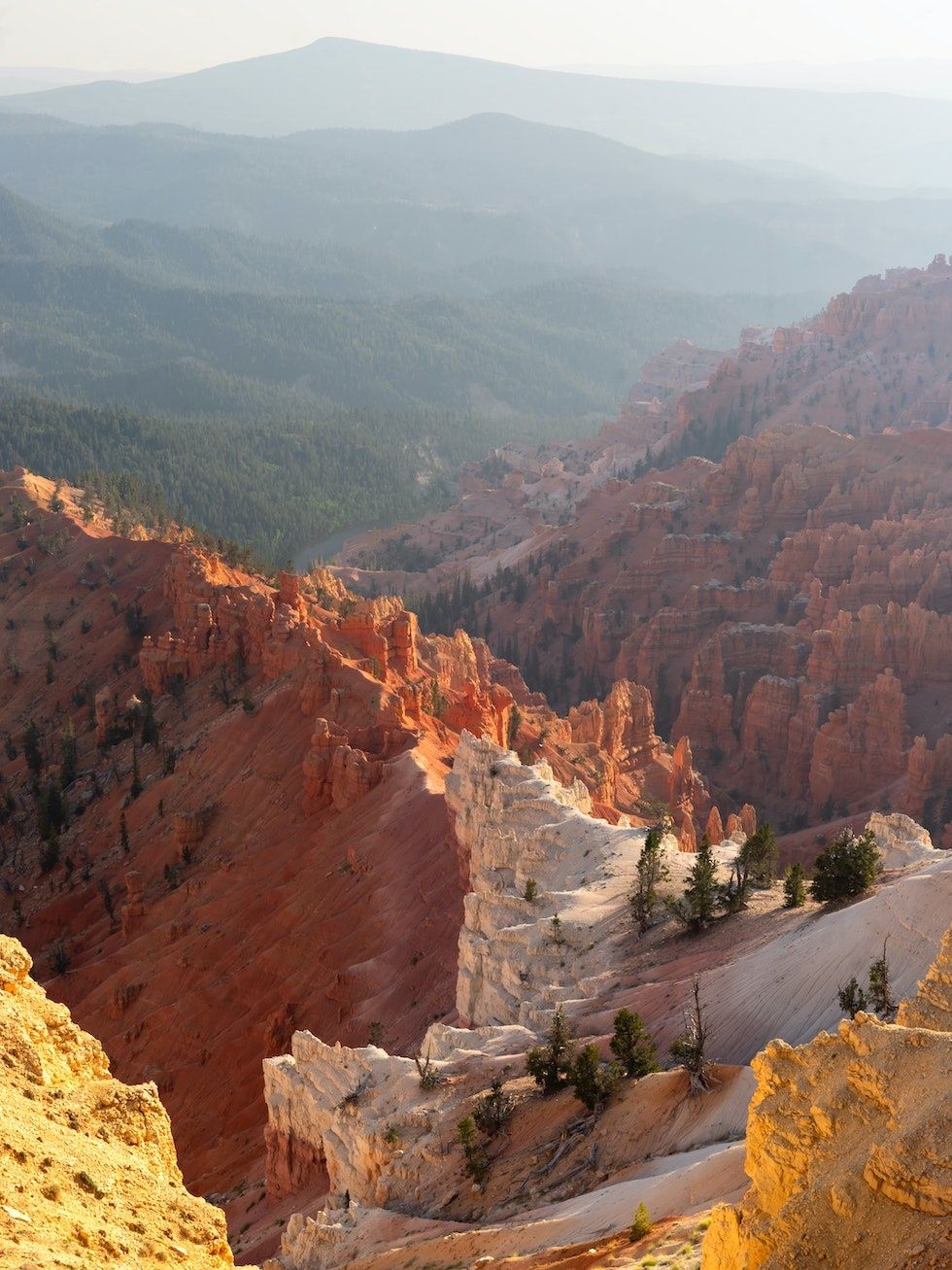
(Photo by Jim Witkowski on Unsplash)
Cedar Breaks National Monument is a naturally formed, three-mile-wide amphitheater located east of Cedar City, Utah. At 2,000 feet deep, Cedar Breaks resembles a hybrid of Bryce Canyon and the Grand Canyon—but with half the crowds. The coliseum is comprised of arches, pinnacles, canyons, and stone spires in vibrant hues of terra cotta, yellow, and even purple. The park is also home to one of the world's oldest trees, the bristlecone pine. With panoramic views around every corner (even from the window of the gift shop), there's no lack of opportunities to take in the stunning scenery. Here are some of the highlights.
Spectra Point and Rampart Overlook Trail
This 3.7-mile hike combines two of the best trails in the park. Cedar Breaks sits at 10,000 feet above sea level, so be mindful of the effect the elevation will have on your stamina no matter which hike you choose. The journey to Spectra Point runs 1.9 miles along the rim of Cedar Breaks with vast views at every step. You'll pass through the ancient bristlecone pine trees and eventually end at a spectacular lookout point.
You may choose to turn around and head back here, or continue on the Rampart Overlook Trail. The crowd thins out even more on this portion of the trail as you weave your way further around the amphitheater. It's about one more mile from Spectra Point, but it does get a little more difficult with various inclines on this portion. When you reach Rampart Overlook, you'll be able to truly take in the depth of the coliseum.
When to Go
Unlike Snow Canyon, temperatures at Cedar Breaks can vary greatly throughout the year because of its elevation. It's usually 10 to 20 degrees cooler than cities even 20 miles away, so be prepared for unpredictable weather. It's not uncommon to see snow beginning in November through February or March, but the park is still open and can offer extraordinary views when blanketed with white. If you're looking for a warmer visit, June through August see temperatures in the high 60s, while the late spring (April and May) and early fall (September and October) tend to hover in the 50s.
Camping in Southern Utah
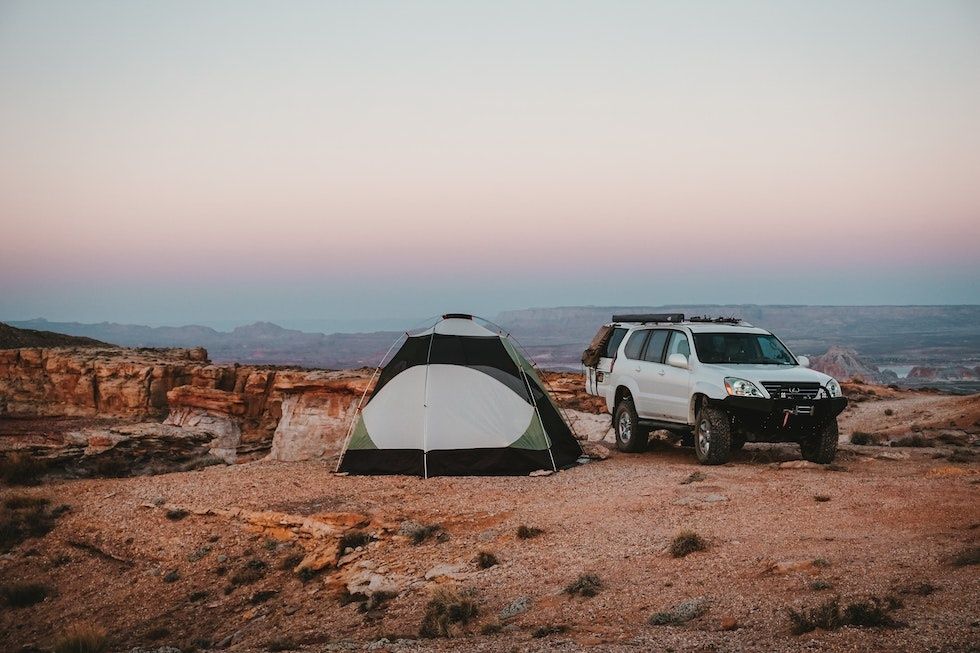
Camping on a sandstone cliff in southern Utah.
(Photo by Christian Schrader on Unsplash)
While there are plenty hotels and Airbnbs almost everywhere you go, it's hard to beat camping in Southern Utah where more than a dozen campsites between Hurricane and Cedar City offer everything from forest to desert terrain.
The best option, if you're able, is to seek out free dispersed camping in Southern Utah. The Bureau of Land Management (often referred to as BLM) owns about 22.9 million acres of public land in Utah (that's roughly 42 percent of the state), and camping on its land is free. BLM dispersed campsites in Utah are spectacular. The best way to locate a BLM site near your destination (and get more info from people who have actually been) is by visiting The Dyrt's campground guide. Use the filters to select free campsites and be sure to read the reviews to make sure you have the appropriate vehicle for your site.



